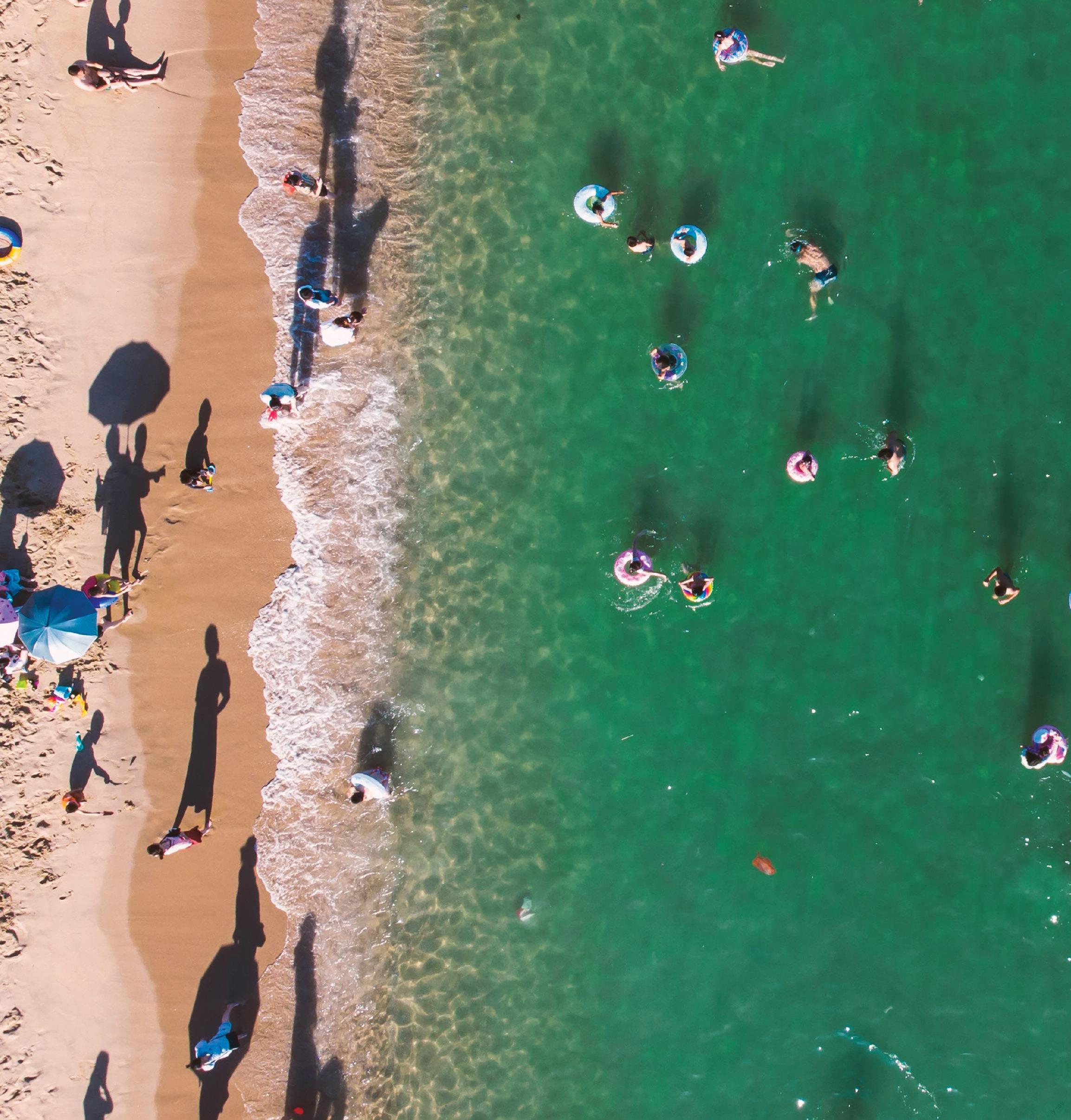By the Sea
Hatty Liu



How China works, plays, and lives on the coast
海邊不仅仅是休闲度假地,还是千万沿海居民的日常与生计
Photography by Xin Ting (辛挺)
When Shantou-based photographer Xin Ting recently finished watching the 1983 Taiwan coming-of-age filmThe Boys from Fengkuei, his first thought was to go spend a few days by the ocean. “There is too much sea here. The sea is everywhere. Sometimes it threatened to swallow up the sky,” screenwriter Chu Tien-wen had described the horizon of the small fishing village where the film is set, where the sea provides a constant backdrop to the bickering, brawling, and small-town boredom of its three young male protagonists.
While the seaside has become a favorite holiday destination for urbanites in summer, it is also where around 20 percent of Chinas population lives and works—along an 18,000-kilometer shore from Liaoning in the Northeast to the South China Sea, an estimated 260 million people call coastal cities and prefectures home. From fishermen steering their boats through channels of container ships, to residents out for a seaside stroll (or just staring aimlessly out into the deep blue) in the evening, activity by the coast is always varied. Compared to the vacation photos of tourists, those more mundane seaside scenes may not always be remarkable or pretty, yet the vast expanses of water and sky nevertheless lend even the most humdrum happenings a poetic air.
Xin Ting certainly thought so: Between 2014 and 2021, he took various pictures around the scenic coastline of southeastern China—Guangdong and Hainan provinces—focusing particularly on Shantou and Chaozhou (Teochew), cities with long histories of seafaring and sending migrants to Southeast Asia and beyond. From working to playing, toiling to enjoying, here are all the ways China is sustained by the sea.
A public swimming area near Nanao Island off the coast of Shantou
A kite merchant displays his wares to the perfect backdrop
Its easy to take a picturesque photo when the sea is nearby
Seeing the ocean for the first time is a memorable experience for many children
Fishing boats resting by the shore in the off-season
Locals in Shantou can catch the sun setting on the sea simply by strolling to a park
Shantou locals fishing near where the Han River meets the South China Sea
Locals in Chaozhou demonstrate a traditional fishing method by pulling in nets together
A mural in Shantou honoring the 6 million Teochew people who migrated to Southeast Asia in the late 19th and early 20th centuries
A ferry fetches locals as well as tourists between the islands near Chaozhou
Fishermen return to the harbor at dusk
Fishing families mend their nets before the start of fishing season
Passengers are few on the last ferry of the day between downtown Shantou and the suburban Haojiang district

